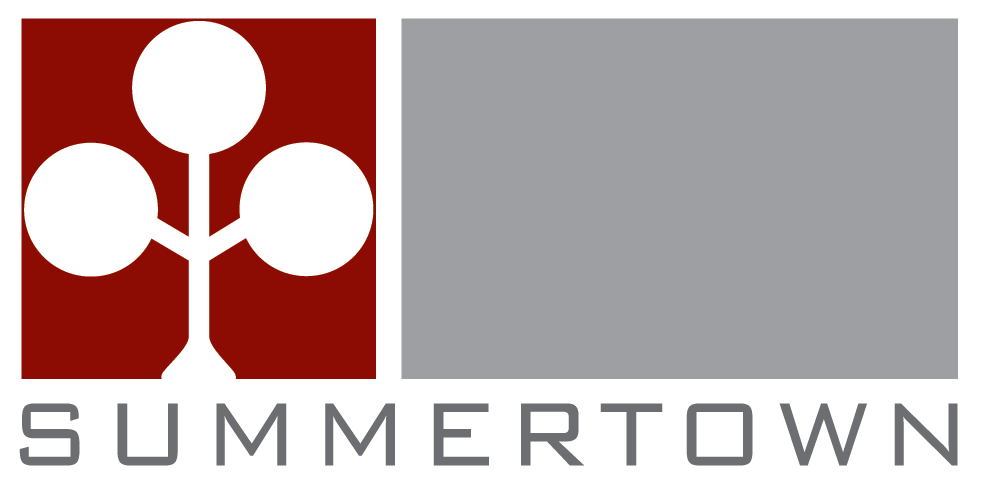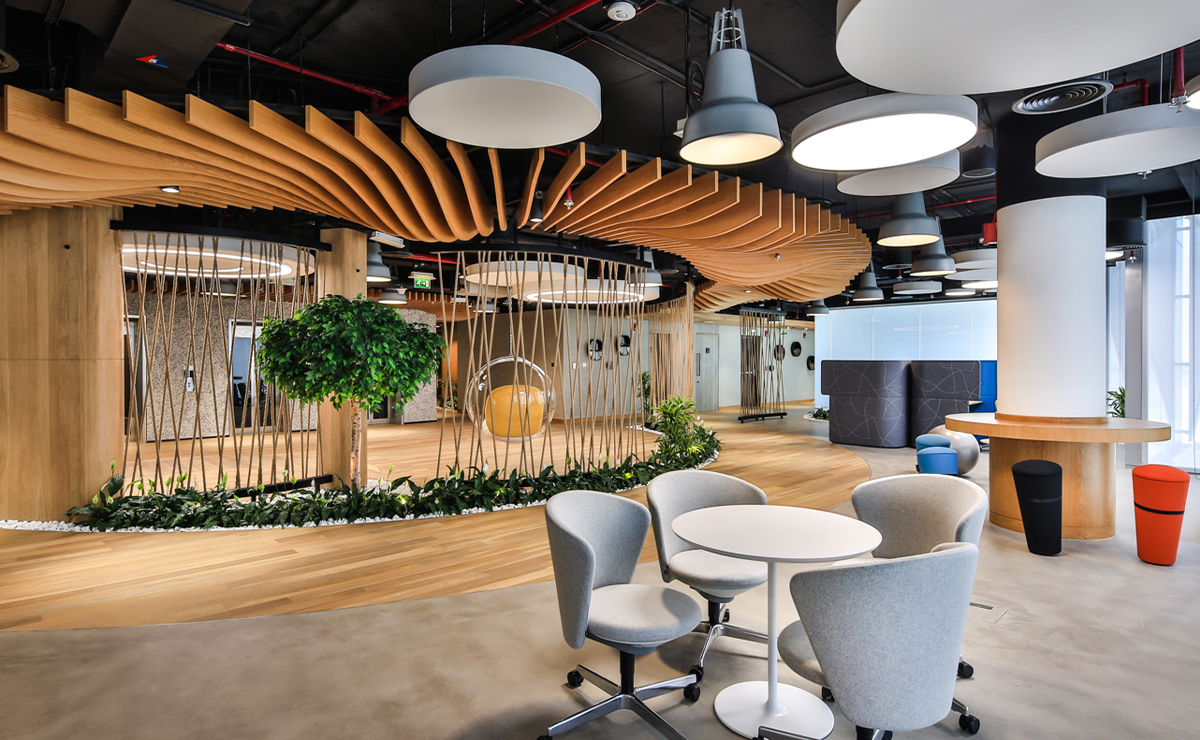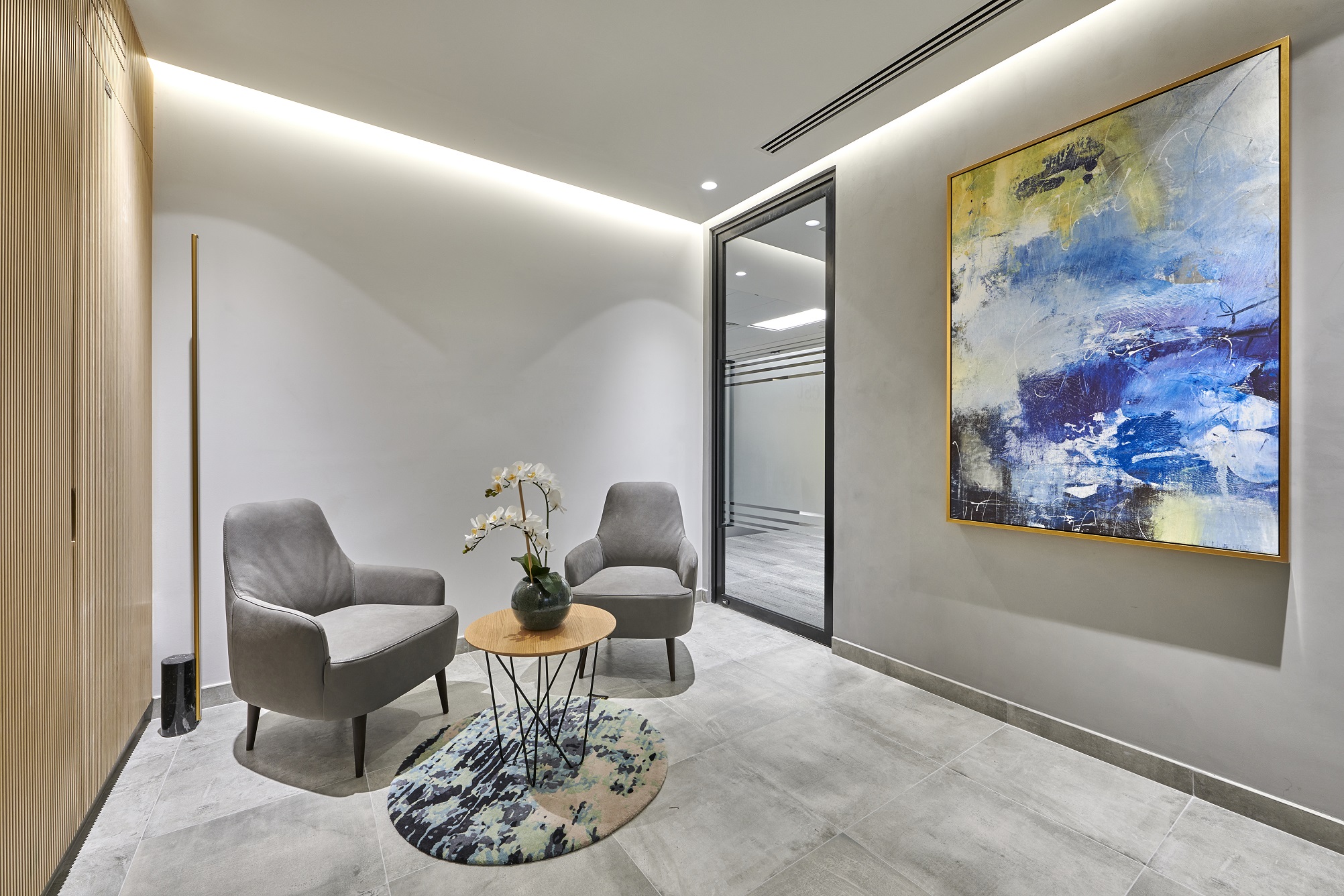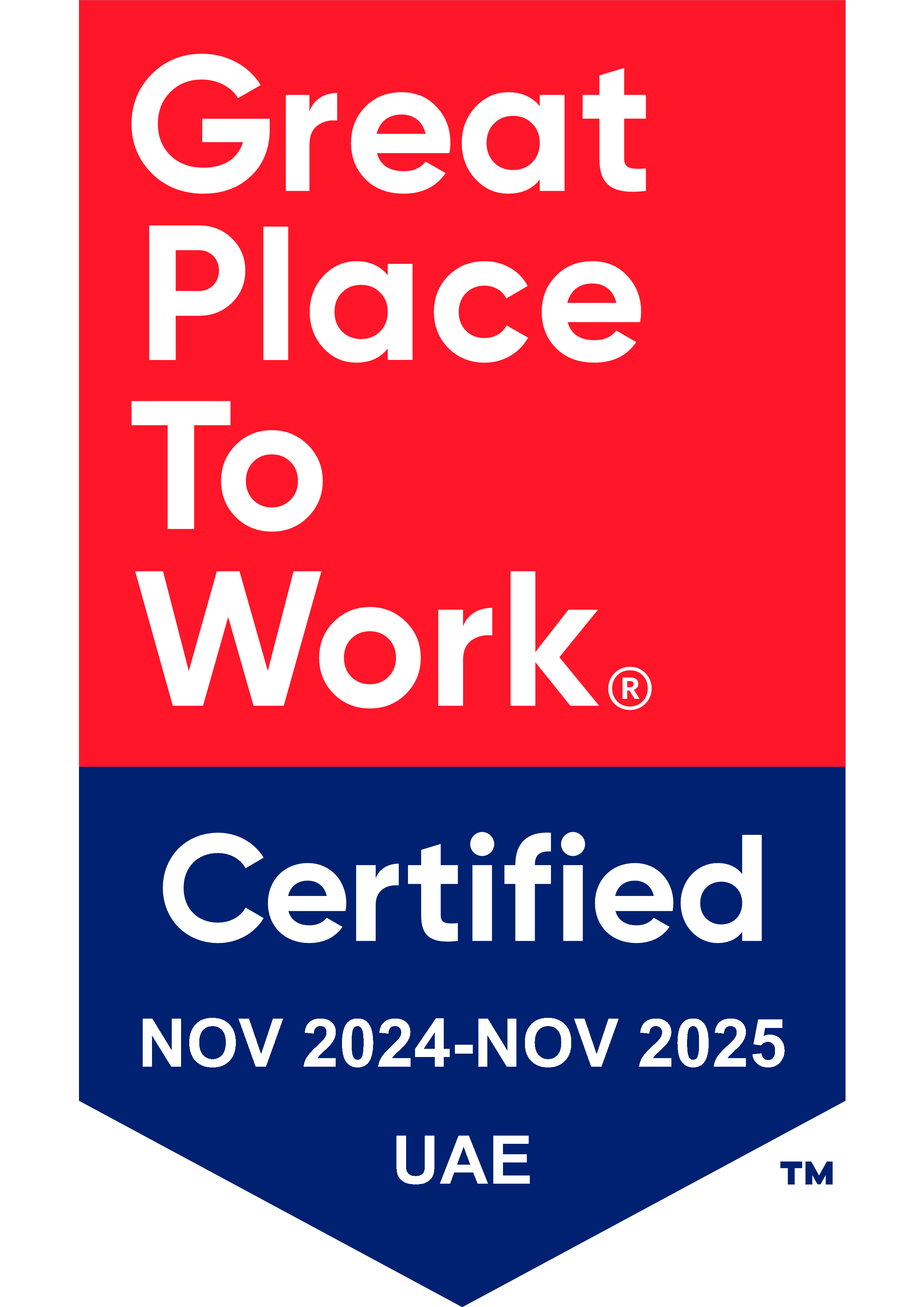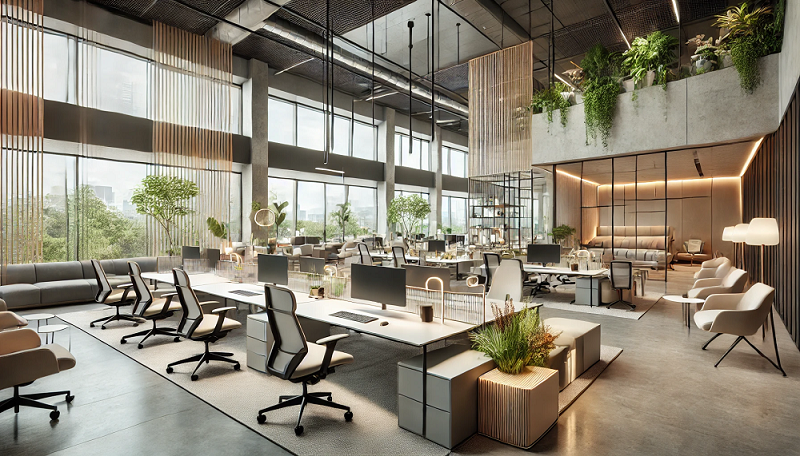

Nicola Trivett
General Manager & Sustainability Leader
Sustainability has become a cornerstone of modern office design, offering more than just environmental benefits. Forward-thinking businesses are transforming their workspaces to be greener, more efficient, and aligned with long-term goals. Beyond reducing their ecological footprint, these initiatives are proving their worth by driving down costs and enhancing employee well-being.
In this article, we’ll explore how sustainable fit out projects are not only shaping the future of office design but also providing businesses with a competitive edge. We’ll dive into the latest trends, technologies, and materials that are making workplaces more resilient and productive. By the end, you’ll see how integrating sustainability into your office design can position your business to thrive in the years ahead.
The Increasing Demand for Sustainable Offices
The push for sustainable office spaces has been gaining momentum, driven by a mix of regulatory pressures, Corporate Social Responsibility (CSR), and changing expectations from both consumers and employees. In regions like the UAE and the UK, where environmental regulations are increasingly stringent, businesses are adopting sustainable practices in their office fit outs to comply with local standards. Yet, the motivations for going green extend well beyond mere compliance.
Companies are recognising that sustainability is an essential part of their long-term strategy, aligning with the global shift towards environmental stewardship. This emphasis on CSR has led many organizations to embed sustainability into their core values, making sustainable office design not just a trend but a crucial business imperative that resonates with the values of today’s market.
It is also worth noting that the demand for sustainable offices has been significantly influenced by the expectations of both employees and clients. Today’s workforce – more environmentally conscious than ever – prefers to work in spaces that reflect their values, while clients are more inclined to engage with companies that demonstrate a genuine commitment to sustainability. This growing demand underscores the broader benefits of sustainable office design, which extend beyond environmental impact to include significant reputational gains.
Integrating Emerging Trends and Technologies
As the demand for sustainable offices grows, the industry is responding with innovative materials and technologies aimed at reducing environmental impact. One of the most significant trends is the use of green building materials (such as recycled or reclaimed resources), low-VOC finishes, and sustainably sourced wood. These materials not only lower the environmental footprint of construction but also contribute to healthier indoor environments.
Energy-efficient technologies are another key component of sustainable office design. Innovations like LED lighting, smart HVAC systems, and the integration of renewable energy sources such as solar panels transform how offices operate. These technologies reduce energy consumption and contribute to cost savings over time, with smart HVAC systems, for example, optimizing energy use based on occupancy and external conditions.
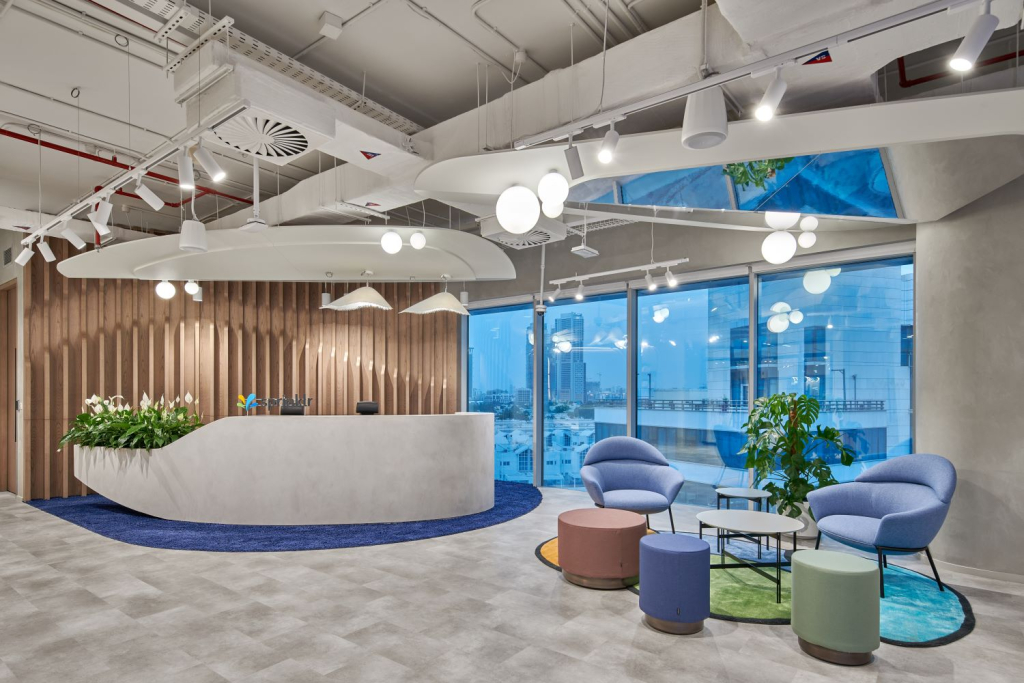
Biophilic design is also on the rise; incorporating natural elements like plants and natural light into the workplace. This approach not only enhances the aesthetic appeal of office spaces but also promotes employee well-being, as studies have shown that environments enriched with natural elements can reduce stress, improve cognitive function, and boost productivity. Integrating biophilic design into office fit outs allows businesses to create spaces that are both sustainable and supportive of employee health.
Innovative space planning is also becoming increasingly important, as companies strive to maximize energy efficiency while meeting the evolving needs of the modern workforce. Flexible workspaces – which can be easily reconfigured for different tasks – have become a staple of contemporary office design, reducing the need for future renovations and ensuring that offices can adapt to changing business requirements.
How Sustainability Benefits Businesses
Integrating sustainability into office design brings a host of benefits that extend beyond environmental considerations to include financial performance, employee satisfaction, and brand reputation. One of the most tangible advantages is the cost savings. Sustainable office designs often lead to lower operational costs through energy savings, reduced maintenance expenses, and potential tax incentives. For instance, energy-efficient technologies like LED lighting and smart HVAC systems can significantly reduce utility bills, while green building materials typically require less maintenance.
Employee wellbeing is another critical area in which sustainability makes a positive impact. Sustainable offices often feature improved air quality, natural lighting, and ergonomic furniture – all of which can significantly enhance the health and productivity of employees. Research shows that workers in green-certified buildings report fewer health issues, higher job satisfaction, and improved overall performance. This boost in productivity, coupled with reduced absenteeism, directly benefits a company’s bottom line.
From a brand perspective, sustainability is increasingly becoming a key differentiator in a competitive market. Companies that prioritize environmental responsibility are often viewed more favorably by clients, investors, and the public. This enhanced brand reputation can attract top talent, foster customer loyalty, and open doors to new business opportunities. In a world where consumers and employees are more environmentally conscious than ever, businesses that embrace sustainability are better positioned to thrive.
And last but not least, sustainable office design contributes to long-term business resilience. By adopting practices that align with evolving environmental standards, companies can avoid the costs and disruptions associated with future retrofits or redesigns. This future-proofing aspect ensures that office spaces remain functional, efficient, and compliant with regulations over time, providing a solid foundation for sustained business success.
Future-Proofing Through Sustainability
As businesses look to the future, the concept of future-proofing through sustainability becomes increasingly important. Future-proofing in office design involves creating spaces that remain relevant and efficient as environmental standards and business needs evolve. In today’s rapidly changing world, offices must be designed with flexibility and adaptability in mind, ensuring they can accommodate new technologies, regulatory changes, and shifting workforce dynamics.
A key strategy for future-proofing is aligning office design with evolving environmental standards. As regulations around energy use, carbon emissions, and waste management become stricter, businesses that have already embraced sustainable practices will find it easier to comply with new requirements. This reduces the risk of non-compliance and minimizes the need for costly retrofits or redesigns in the future.
Another crucial aspect of future-proofing is creating adaptable spaces. By designing offices with modular furniture, flexible layouts, and infrastructure that supports technological advancements, businesses can ensure that their spaces evolve alongside their needs. For example, a flexible workspace can be easily reconfigured to accommodate different team sizes or working styles, reducing the need for extensive renovations down the line.
Environmental and economic sustainability go hand in hand when it comes to future-proofing. Sustainable office designs not only reduce environmental impact but also offer long-term cost savings and operational efficiencies. By investing in energy-efficient technologies, durable materials, and smart space planning, businesses can create office environments that are not only environmentally responsible but also financially viable for years to come.
The Role of Collaboration
Achieving sustainable, future-proof office designs requires a collaborative approach, where businesses, architects, and fit out contractors work closely together to create spaces that meet both environmental and business objectives. The design process must integrate input from multiple disciplines, including environmental engineering, interior design, and workplace strategy, to ensure that all aspects of sustainability are considered.
Collaboration is especially important in the early stages of a fit out project when decisions about materials, technologies, and layouts are being made. By involving all stakeholders from the outset, businesses can ensure that sustainability goals are aligned across the board. This collaborative approach not only leads to more innovative solutions but also ensures that sustainability is embedded into every aspect of the project.
Successful examples of collaboration in office design can be seen in projects where cross-disciplinary teams have come together to create spaces that are both functional and sustainable. These projects often feature innovative uses of materials, advanced technologies, and thoughtful space planning, all of which contribute to the overall sustainability of the office environment.
Looking forward, ongoing collaboration will be essential as new developments in sustainability and technology continue to emerge. By maintaining strong partnerships between businesses, architects, and contractors, companies can stay ahead of the curve and ensure that their office spaces remain at the forefront of sustainable design.
The Lasting Impact of Sustainable Fit Outs
Sustainable office design has moved far beyond being a trend; it has become a smart strategy that’s essential for businesses aiming to thrive in the long term. By integrating sustainability into fit out projects, companies can reduce their environmental impact while creating workspaces that are efficient, adaptable, and healthier for employees. These benefits extend well into the future, delivering financial savings and preparing your office to meet new challenges, making sustainability a key investment in long-term success.
At Summertown Interiors, we understand how crucial sustainability is in today’s office design. We’ve partnered with many businesses to create spaces that are both eco-friendly and perfectly aligned with their unique operational needs. By selecting sustainable materials, implementing energy-efficient technologies, and designing flexible layouts, we ensure your office is built to last—without sacrificing functionality or style.
As sustainability continues to shape the future of office design, incorporating these principles into your fit out projects is essential for staying competitive, relevant, and resilient. Summertown Interiors is here to help you create a workspace that’s ready for the future.
Step into the future of office design – contact Summertown today to create a sustainable space that stands the test of time.
Download our latest sustainability report
SOURCES
- Green City Times – Innovations in Green Building Materials and Energy-Efficient Technologies
- LinkedIn Pulse – Advancements in Green Building Materials
- UK Construction Week – Building the Future: 7 Green Building Materials to Explore in 2024
- Sensgreen – Economic and Operational Benefits of Sustainable Office Design
- NCBI – The Impact of Working in a Green-Certified Office on Cognitive Function and Health
- ResearchGate – The Economic Benefits of Green Buildings: A Comprehensive Case Study
- Terrapin – The Economics of Biophilia (Report)
- AZ Big Media – How to Future-Proof Your Office Design for Evolving Needs
- World Economic Forum – Radical Collaboration for a Sustainable Future: The Case for Sustainability Collaboration
- Sustainable Development Goals Report – Regional Focus: Sustainability in Office Design in the UAE and the UK
- RICS – United Arab Emirates: Decarbonising Buildings
Emirates GBC – UAE Sustainability Built Environment Blueprint

Nicola Trivett
General Manager & Sustainability Leader
